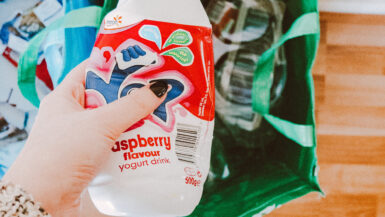In today’s world, the impact of plastic waste on the environment has become a major concern for many. As we strive to adopt sustainable practices in our daily lives, it is crucial to address the significant role played by single-use plastics in the global waste crisis. One area where we can make a substantial difference is grocery shopping, which typically involves a significant amount of plastic packaging. In this article, we will discuss essential zero waste grocery shopping tips that will help you transition towards a plastic-free lifestyle. We will delve into the importance of preparation, choosing the right stores, and embracing reusable alternatives. Embark on this journey with us as we explore practical ways to reduce your plastic footprint and contribute to a greener, cleaner future for our planet.
Top Reusable Products for a Zero-Waste Shopping Experience
As we embark on our journey towards a zero-waste grocery shopping experience, it is essential to invest in reusable products that will help us reduce our individual plastic footprint. These products not only help in cutting down single-use plastics but also contribute to a more sustainable and eco-friendly lifestyle. In this subsection, we will explore some of the top reusable items that you can incorporate into your shopping routine for a greener future.
The Magic of Reusable Grocery Bags
One of the most significant contributors to plastic waste is the ubiquitous single-use plastic grocery bag. Thankfully, there are numerous reusable alternatives available in the market, ranging from sturdy canvas totes to lightweight nylon bags. These bags are not only more durable and environmentally friendly but also make for stylish companions on your shopping trips. Make sure to keep a few of these in your car, purse, or backpack, so you’re always prepared for impromptu shopping outings.
Embrace the Versatility of Produce Bags
While shopping for fruits and vegetables, it is common to reach for the thin plastic bags provided by supermarkets. To avoid this, invest in reusable produce bags made from materials like cotton or mesh. These bags are washable, lightweight, and allow your produce to breathe, ensuring they stay fresh for longer. Moreover, they come in different sizes, making them perfect for carrying anything from delicate berries to bulky root vegetables.
Go Green with Reusable Containers and Jars
Bulk-buying is an excellent way to reduce plastic packaging waste. However, it is crucial to have appropriate containers to store your purchases. Reusable glass jars and stainless steel containers are perfect for holding dry goods like grains, pasta, and spices. Some stores even allow you to bring your containers and tare the weight before filling them up, which eliminates the need for any packaging altogether.
Choose a Sustainable Alternative for Wrapping
Plastic cling wrap is another common source of single-use plastic in our kitchens. Instead, opt for eco-friendly alternatives like beeswax wraps or silicone food covers. These reusable products can be washed and reused multiple times, making them a cost-effective and environmentally conscious choice for storing food and covering dishes.
Stay Hydrated with a Reusable Water Bottle
Finally, remember to carry a reusable water bottle while shopping to avoid buying plastic water bottles. There are various options available, including insulated stainless steel bottles that keep your drinks cold or hot for hours. Investing in a good-quality reusable bottle will not only help you stay hydrated but also reduce your plastic waste significantly.
By incorporating these reusable products into your shopping routine, you can take significant strides towards a zero-waste lifestyle and contribute to a cleaner, greener future for our planet.
Local Farmers Markets: Your Go-To for Plastic-Free Groceries
Embracing a zero-waste lifestyle requires a conscious shift in our shopping habits, and one great way to achieve this is by supporting local farmers markets. These markets not only offer fresh, seasonal produce, but they also typically use minimal or no plastic packaging, making them an ideal destination for those seeking to reduce their plastic consumption. In this subsection, we will explore various benefits of shopping at farmers markets and provide tips on how to make the most of your plastic-free shopping experience.
Benefits of Supporting Local Farmers Markets
Farmers markets have numerous advantages that extend beyond their eco-friendly practices. Shopping at these markets supports local farmers, promotes healthier eating habits, and helps build a sense of community. By purchasing directly from the source, you can enjoy fresher, more nutritious produce, often grown without the use of harmful pesticides or chemicals. Furthermore, purchasing locally sourced items helps reduce the carbon footprint associated with transporting goods long distances.
Preparation is Key: Bring Your Reusable Bags and Containers
When heading to a farmers market, it is essential to come prepared with your reusable grocery bags, produce bags, and containers. This foresight not only helps you avoid plastic waste but also ensures that you can efficiently store and transport your purchases. Make it a habit to keep your reusable bags and containers handy, so you never find yourself in a bind.
Shop Seasonally and Plan Your Meals Accordingly
One of the best aspects of shopping at farmers markets is the opportunity to purchase seasonal produce. This not only allows you to enjoy fruits and vegetables at their peak of freshness but also encourages you to create diverse, nutritious meals. To make the most of your plastic-free shopping experience, plan your meals around what is available seasonally, and do not be afraid to try new ingredients or recipes.
Ask Questions and Build Relationships with Local Farmers
Farmers markets provide a unique opportunity to get to know the people who grow your food. Engage with the vendors, ask questions about their farming practices, and express your appreciation for their efforts in providing plastic-free options. Building relationships with local farmers can lead to valuable insights into sustainable agriculture and may even result in opportunities to purchase items in bulk or without packaging.
Consider Preserving and Freezing Excess Produce
Due to the nature of seasonal produce, you may find yourself with a surplus of fruits and vegetables at times. Instead of letting this bounty go to waste, consider preserving or freezing the excess for future use. This practice not only helps you maintain a plastic-free kitchen but also ensures that you have a ready supply of nutritious ingredients throughout the year.
By seeking out local farmers markets and adopting the tips mentioned above, you can significantly reduce your plastic footprint while enjoying fresh, seasonal produce. This mindful approach to grocery shopping not only benefits the environment but also promotes healthier eating habits and supports local communities.
The Ultimate Guide to Bulk-Buying for a Plastic-Free Pantry
Embracing the concept of bulk-buying is a fantastic way to drastically reduce the plastic packaging waste generated during grocery shopping. This practice not only minimizes your environmental impact but also allows you to save money and maintain a well-stocked pantry. In this subsection, we will provide a comprehensive guide to bulk-buying, covering essential tips and strategies for navigating this eco-friendly shopping approach.
Finding Your Local Bulk Stores and Co-ops
The first step in your bulk-buying journey is to locate stores and co-ops in your area that offer package-free products. These establishments typically provide a wide range of items, including grains, cereals, pasta, spices, and even personal care items. Conduct online research, ask around in your community, or use mobile apps dedicated to helping you find zero-waste shops near you.
Invest in Reusable Containers and Bags
A successful bulk-buying experience requires the right tools. As mentioned earlier, reusable containers like glass jars and stainless steel canisters are essential for storing your purchases. Additionally, having a collection of reusable produce bags and cloth bags for carrying bulk items like nuts, seeds, and dried fruit will help you avoid single-use plastic bags.
Master the Art of Tare Weighing
Before filling up your containers, it’s crucial to know their empty weight or “tare” weight. This ensures that you are only charged for the actual weight of the product you’re purchasing. Many bulk stores have scales available for customers to weigh their containers and mark the tare weight on a label or directly onto the container. Familiarize yourself with this process to streamline your shopping experience.
Organize Your Shopping List and Prioritize Your Needs
When bulk-buying, it’s essential to plan your shopping list strategically. Determine which items are staples in your household and prioritize purchasing these in bulk. Don’t be tempted to buy everything in sight just because it’s package-free. Stick to what you need and will use, to avoid food waste and unnecessary expenses.
Explore DIY Options for Personal Care and Cleaning Products
Bulk-buying doesn’t have to be limited to food items. Many zero-waste stores also offer package-free personal care and cleaning products, such as shampoo, soap, and laundry detergent. You can also explore making your own eco-friendly alternatives using ingredients like baking soda, vinegar, and essential oils. This not only reduces plastic waste but also allows you to customize products to suit your preferences and needs.
Remember to Be Patient and Flexible
Transitioning to a bulk-buying lifestyle may require some adjustments and might not always be seamless. Be patient as you learn the ropes and adapt your shopping habits. It’s essential to be flexible and open to trying new products or brands as you explore package-free options. Remember that every small effort you make contributes to a more significant positive impact on the environment.
By following this ultimate guide to bulk-buying, you can create a plastic-free pantry while enjoying the benefits of reduced waste, cost savings, and a more sustainable lifestyle. With practice and dedication, you’ll soon become a pro at navigating the world of bulk shopping and make a lasting difference for our planet.
How to Choose and Store Produce Without Plastic Packaging
Adopting a plastic-free lifestyle extends beyond the shopping process and into the way we store and preserve our produce at home. Learning how to select and store fruits and vegetables without relying on plastic packaging can significantly reduce our plastic consumption while ensuring our produce stays fresh and delicious. In this subsection, we will share essential tips and tricks for choosing and storing produce without the need for plastic packaging, making your zero-waste grocery shopping experience even more impactful.
Master the Art of Selecting Fresh Produce
To maximize the shelf life of your fruits and vegetables, it’s essential to choose fresh, high-quality produce during your shopping trips. Familiarize yourself with the signs of freshness for various types of produce, such as firmness, color, and aroma. By selecting the freshest items, you will reduce the likelihood of spoilage and waste, ensuring your plastic-free purchases last as long as possible.
Know Your Fruits and Vegetables: Separating Ethylene Producers
Certain fruits, such as apples, bananas, and tomatoes, produce ethylene gas, which can accelerate ripening and spoilage in nearby produce. To prevent this, store ethylene-producing fruits separately from ethylene-sensitive produce like leafy greens, cucumbers, and berries. This knowledge will help you maintain the freshness of your fruits and vegetables without relying on plastic packaging.
Embrace the Power of Breathable Storage
When storing produce without plastic, it’s crucial to allow for adequate airflow. Many fruits and vegetables benefit from being stored in breathable containers, such as cloth bags or mesh produce bags. These materials help maintain the right balance of humidity and air circulation, which prevents mold growth and extends the shelf life of your produce.
Get Creative with Glass Jars and Containers
Glass jars and containers are not only great for storing dry goods but also can be used for keeping certain produce fresh without the need for plastic. For example, store delicate herbs like cilantro and parsley in a glass jar with a small amount of water at the bottom, and cover the tops with a reusable food cover. This method mimics a mini greenhouse, maintaining the freshness and vibrancy of your herbs for an extended period.
Maximize Fridge Space with Proper Organization
Organizing your refrigerator strategically can significantly improve the longevity of your produce without the need for plastic. Store fruits and vegetables in separate crisper drawers, adjusting humidity levels accordingly, to create the optimal storage environment. Keep ethylene-producing fruits away from other produce to avoid premature ripening, and store leafy greens and delicate items in the coldest part of the fridge to maintain their freshness.
Consider Alternative Preservation Methods
Sometimes, despite our best efforts, we may find ourselves with more produce than we can consume before it spoils. In these cases, consider alternative preservation methods, such as freezing, canning, or drying, to extend the shelf life of your fruits and vegetables without resorting to plastic packaging. These techniques allow you to enjoy your produce year-round while minimizing waste and maintaining a plastic-free lifestyle.
By implementing these tips for selecting and storing produce without plastic packaging, you can further commit to a zero-waste grocery shopping experience and a more sustainable lifestyle. Each step you take in reducing your reliance on plastic contributes to a healthier environment and a brighter future for our planet.
Navigating the Aisles: Avoiding Hidden Plastics in Your Grocery List
As you strive to achieve a plastic-free lifestyle, it’s essential to be aware of the hidden plastics that can sneak into your grocery shopping basket. Many seemingly harmless items are often packaged in plastic or contain plastic components that contribute to environmental pollution. In this subsection, we will provide valuable guidance on identifying and avoiding these hidden plastics, enabling you to make well-informed choices and further reduce your plastic footprint.
Be Wary of Plastic-Lined Containers and Wrappings
At first glance, certain containers and wrappings may appear to be made of paper or cardboard. However, a closer examination may reveal that these materials are lined with plastic, making them non-recyclable and detrimental to the environment. Examples include disposable coffee cups, Tetra Pak containers, and some frozen food boxes. Whenever possible, opt for items with truly recyclable or compostable packaging to minimize your plastic waste.
Steer Clear of Single-Use Items
While shopping, be mindful of single-use items, such as plastic cutlery, straws, and disposable plates. These products contribute to a significant amount of plastic waste and can easily be replaced with reusable alternatives. By making a conscious effort to say no to single-use plastics, you can substantially reduce your environmental impact and encourage others to do the same.
Choose Products with Minimal or Recyclable Packaging
As you navigate the grocery store aisles, opt for products with minimal or recyclable packaging. Prioritize items sold in glass jars, metal cans, or paper packaging, as these materials can often be recycled or repurposed. Additionally, make a habit of checking the recycling symbols on packaging to ensure that you’re making eco-friendly choices.
Beware of Microplastics in Personal Care Products
Microplastics are tiny plastic particles that can be found in various personal care products, such as facial scrubs, toothpaste, and shower gels. These particles are too small to be filtered during wastewater treatment, ultimately ending up in our oceans and harming marine life. To avoid contributing to microplastic pollution, choose products with natural exfoliants, such as apricot kernels, oatmeal, or sugar, and look for eco-friendly alternatives for your daily personal care needs.
Opt for Fresh Produce Over Pre-Packaged Options
Pre-packaged fruits and vegetables are often wrapped in plastic, making them detrimental to your zero-waste goals. Instead, opt for fresh, loose produce and use your reusable produce bags to carry them. Not only will this reduce your plastic consumption, but it also allows you to select the freshest and most nutritious items available.
Consider Making Your Own Snacks and Treats
Snack foods and sweets are notorious for their plastic packaging. Fortunately, there are countless recipes available for making your own delicious and healthy alternatives at home. By preparing your snacks and treats, you can control the ingredients, reduce plastic waste, and potentially save money in the process.
By being vigilant and informed about hidden plastics in your grocery list, you can make more sustainable choices and significantly reduce your overall plastic consumption. Each step you take towards a zero-waste shopping experience contributes to a healthier environment and a more sustainable future for our planet.





Leave a reply